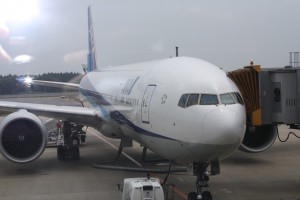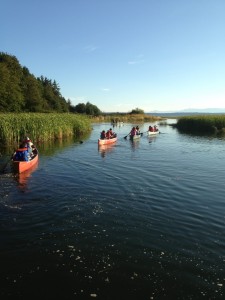Review: Oxford Junior Workbooks
An oldie but goodie
The Oxford Junior Workbook series is a great homework resource for elementary school age children. There are ten workbooks in the series, from the introductory A and B, to the 1-8 of the main series. We have been using these for many years now, and find them extremely useful as supplementary homework for children (post-phonics, pre-intermediate).
The Good
- Price. The books are 735 yen before discounts, so one of the most economical workbooks around.
- Intuitive. Most of the exercises are fairly intuitive and require little explanation. Perfect for homework.
- Well designed. The books build up language and concepts slowly in a very learner-friendly way.
- Range of activities. There are a range of activities, from colouring to matching, writing, and drawing.
The Bad
- Dated. The books are showing their age in terms of design.
- Dated. Some of the language and content is archaic (ink blot?).
- Dated. Slightly sexist and non-PC at times.
Overall
Overall the Oxford Junior Workbook series is a great way to provide extra work outside of class that student enjoy and find useful. They can be used in lockstep by assigning specific pages as homework, or individually by allowing students to work at their own pace. The books are cheap enough that buying one or two each year shouldn’t break the bank.
Very much recommended.
Elementary School English (MEXT announcement)
Some big news from MEXT this week (courtesy of Kensaku Yoshida on Facebook)
Basically, from 2020 (estimated), 5-6 grade students will have English as a subject three times a week with specialist teachers. 3-4 grade students will have English activities once or twice a week.
The devil is in the details (see my recommendations here) but this looks like a step in the right direction!
business curriculum eikaiwa ES expectations JHS junior high school kids language courses Language learning overseas study trips school management summer camp young learners
by sendaiben
2 comments
Taking students to summer camp in the US
This is a guest post (the first on this blog!) by a friend of mine, Ryan Hagglund. He has an extremely promising variation on the usual study abroad trip that I thought you would find interesting. Enjoy and let us know what you think in the comments.
After many years of thinking about it, we finally took students from our school (MY English School in Yamagata) to the US for the first time this summer. Thanks to all the advice and stories I read and heard from others, the trip was overall a success and will hopefully serve as a building block for many more to come.
My impression is that most international trips English schools organize involve some form of formal study. While there is obviously nothing wrong with studying—we ARE a language school—it seems like there’s plenty of time for the students to study while in Japan. The main purpose for us in going was to give the students something they couldn’t receive here: the opportunity to interact with large numbers of English-speaking children of their own age. We wanted to give them an experience that would lead to greater motivation and increased interaction skills, among other things. The instrument we chose to accomplish this was to have the children attend a summer camp intended for children who are native speakers of English, not English learners.
We chose Warm Beach Camp in Stanwood, Washington. We chose Warm Beach for several reasons. First, it is the camp I attended when an elementary and JHS student, so I was familiar with the facilities. Having attended almost 30 years ago, however, I no longer had connections to any of the staff. Second, it is a large facility that not only has many activities for campers to do, but was also able to house our staff away from our students but still onsite. Third, it gave considerable value for the price. Camp was only US $399 per student for six days and five nights—including meals—and they supplied free room and board for our staff in a separate onsite facility. They also provided free sleeping bags and pillows to our students. (Warm Beach is a Christian camp facility, but we were careful to make sure our students and their parents were aware of this. There are most likely secular camps with similar facilities and value.)
We took five students—two boys and three girls—ages 9-13 (Japanese elementary 4th grade to JHS 2nd year). There were approximately 80 campers all together ages 9-11 (US 4th to 6th grade) divided into cabins of six or seven students each. Our 13-year-old student had no problems relating to the younger campers, though JHS 1st year would probably be a good cutoff. Since none of the US campers nor counselors spoke Japanese, the students had to navigate in English. What was nice, however, were the many activities the children were able to participate in, allowing them to interact in English without consciously having to overly focus on the language itself. Some of the activities they participated in were: field games, swimming, archery, horseback riding, canoeing, wall climbing, BB-gun shooting, mini-golf, and a bonfire. While it was challenging for them at first, by the end of the trip four of the five students said they would like to stay longer. The fifth (12 years old) said she was glad to have come, but just ready to go home. We were only with the students for a daily meeting each evening, when pre-activity safety instructions in Japanese were necessary, and when a student became homesick and needed a little extra support. We had a pre-paid US cell phone so the camp and/or counselors could reach us at any time if necessary. They only called us once.
While the camp was our focus, we did do other activities as well. Our schedule was as follows:
Saturday Aug 3 – Arrive in Seattle and tour the city
Sunday Aug 4 – Visit Wild Waves Theme Park
Monday Aug 5 – Saturday Aug 10 – Attend camp and Seattle Mariners baseball game (Aug 10)
Sunday Aug 11 – Return to Japan
We will probably add an additional day of Seattle sightseeing if we go again next year.
Camp positives:
1) No need to be concerned about the quality of homestay families.
2) No need to worry about logistics for most of the trip. While at the camp, we were able to focus entirely on the students’ linguistic and emotional needs, while enjoying ourselves for most of the time. The camp took care of the rest.
3) No need to think of specific language activities, as the situation itself required meaningful English interaction from our students.
4) The camp wanted the trip to be successful as much as we did.
5) No need to pay a third party for special arrangements.
6) Students needed very little spending money. Each student brought 20,000 yen in spending money, but none of them came close to using it all.
7) Since almost everything was included in the camp price, there were fewer opportunities for financial surprises.
8) 24-hour onsite certified nurse, removing the need for us to worry about student sickness and/or injury.
Camp possible negatives:
1) We did have to plan the logistics outside of camp time. This included airline booking, three nights of hotel, sightseeing in Seattle, and transportation to and from the camp. While not difficult, might be hard to leave to a school teacher or staff member not familiar with the Seattle area.
2) Not as appropriate for students who would prefer a “travel experience” versus an “immersion experience”.
All in all, it was a very successful trip—especially for a first time. We are already working to produce marketing materials for a similar trip next year.
Ryan Hagglund is President and CEO of MY English School in Yamagata Prefecture. He has lived in Japan for 15 years and originally hails from the Pacific Northwest. He is married to Maki Hagglund and has three children: Aiden (8), Ian (6), and Sean (4).
business EFL eikaiwa ES expectations high school JHS junior high school kids language courses Language learning school management SHS study trips travel young learners
by sendaiben
17 comments
Taking Students Overseas

I just returned from our second overseas study trip with young learners. It was one of the most exhausting things I have ever done, and involved a large amount of stress for a relatively small return.
Taking students overseas can be a very positive activity for an eikaiwa school:
1. It can be profitable
2. It can raise the school’s profile and image
3. It can be hugely beneficial to student motivation
However, there are also huge potential risks:
1. Worst case scenarios are really bad, and could prove fatal to the school
2. It can involve a huge amount of supplementary work
3. Unexpected expenses can eat up your profit and even push the trip into the red
After two ‘successful’ (I define successful as not having encountered any serious problems) trips, I have learned a huge amount about what doesn’t work. The next two posts will be detailed trip reports and reflections.
Does anyone else organize overseas trips?
Do Japanese Elementary Schools Need More English?
Saw this article in the Asahi newspaper online yesterday. Basically, the government is leaning towards making English an official subject (it isn’t one at the moment, just an extra set of activities), which would mean more classes, and lowering the age at which students start learning English.
Great. This is yet another good idea that is going to be executed horribly.
You know what I would like to see in elementary school.
You know that Japan’s English teachers are on the whole undertrained and not proficient in English (only 20% of JHS and 35% of SHS English teachers have reasonable English qualifications).
I think there should be English classes in elementary school, but they need to be well-planned and implemented by teachers who know how to teach and are proficient in English. Sadly I don’t think we’re going to see either of those…
Am I being too pessimistic?





